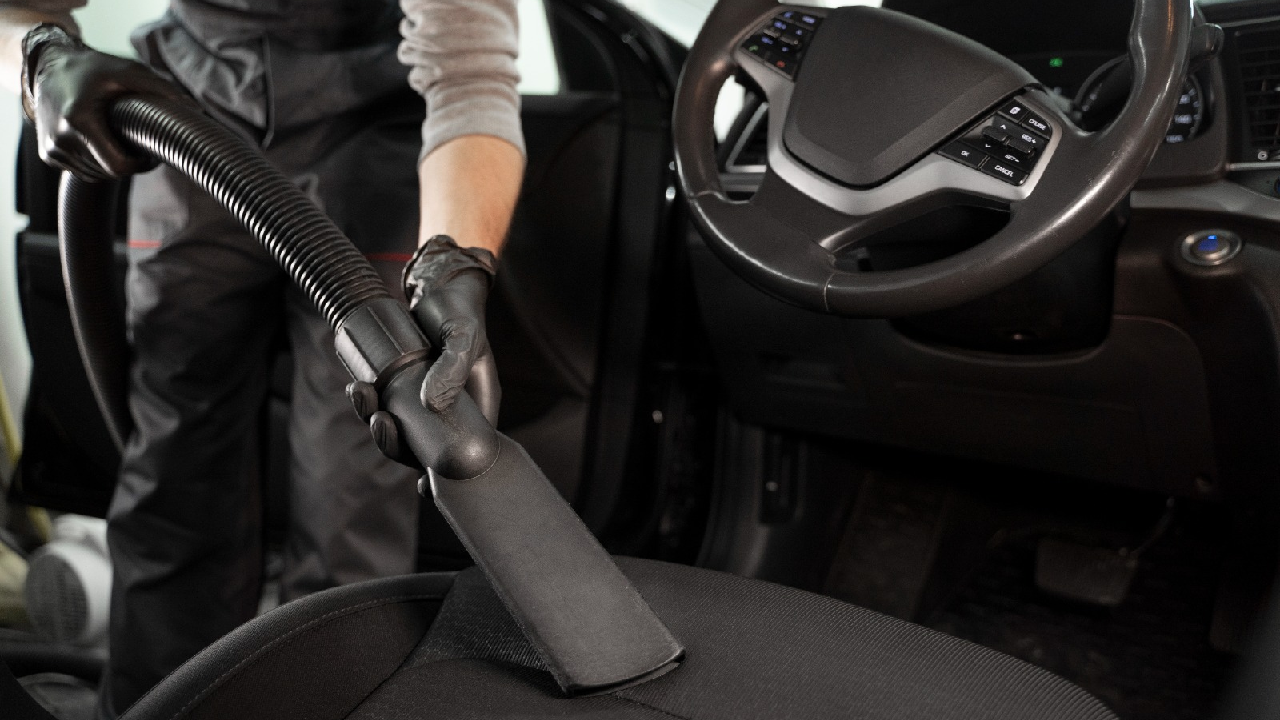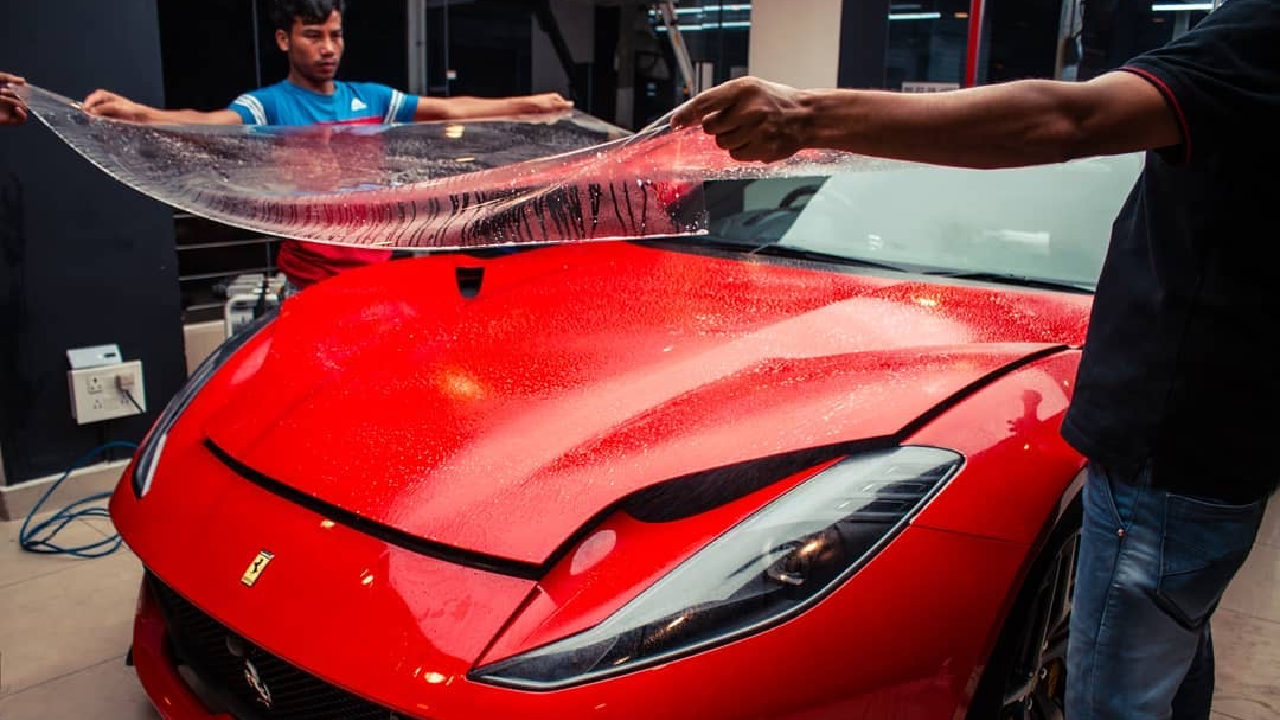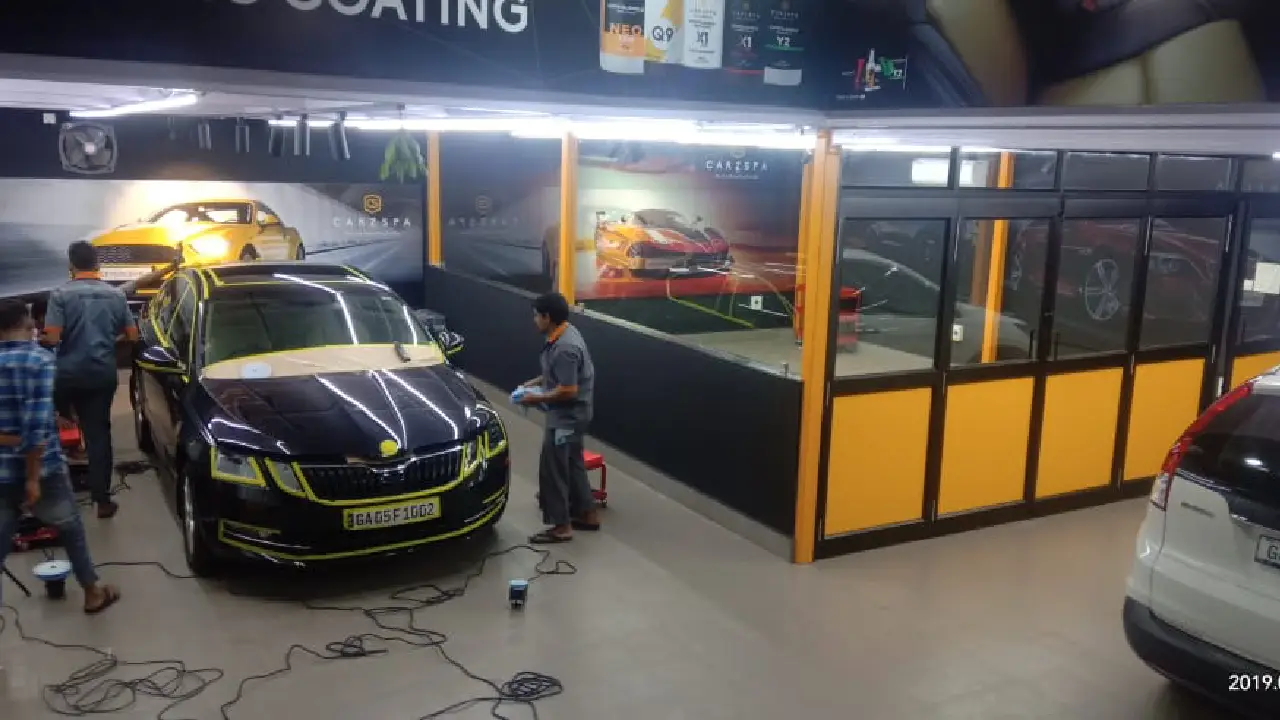Your car’s interior is your personal sanctuary on wheels. It’s where you spend time during your commute, road trips with family, and those peaceful solo drives. You pamper the exterior with car paint protection and ceramic coatings, but what about the space you actually sit in every day? The truth is, your car’s interior deserves just as much love and attention as its exterior. A well-maintained interior not only enhances your driving experience but also preserves your car’s resale value and protects your health and well-being. In this comprehensive guide, the experts at CarzSpa Detailing Studios share everything you need to know about maintaining your car’s interior.
Table of Contents
- Establish Prevention Habits Before Dirt Accumulates
- Vacuum and Dust Regularly for Deep Cleanliness
- Master the Art of Spill and Stain Management
- Protect and Maintain Your Car Seats
- Care for Different Interior Materials Properly
- Keep Your Dashboard and Console Fresh
- Eliminate Odours at the Source
- Organize Your Space to Prevent Clutter
- Address Windows and Glass for Clarity
- Know When to Seek Professional Interior Cleaning
- Concluding Thoughts
- Frequently Asked Questions
Establish Prevention Habits Before Dirt Accumulates
The best way to keep your car’s interior clean is to prevent dirt from accumulating in the first place. Think of it like brushing your teeth daily rather than waiting for a cavity—prevention is always easier than cure. Start by placing a trash bin in your car. A simple waterproof container with a lid, hung from the front seat headrest, can work wonders. This ensures trash doesn’t end up scattered across your floor, seats and compartments.
Next, use seat organizers and storage solutions to keep items in their designated spaces. A cluttered car is a dirty car, and chaos breeds mess. If you have children, a backseat organizer can store toys, snacks, and travel games while preventing dirty shoe marks on your upholstery. For the front, dividers with compartments help reduce clutter and maintain order. Make it a habit to remove personal items every time you exit the car. Don’t let items pile up under seats or in the trunk, as this creates a breeding ground for dust and odours.
If you have pets or frequently transport children, invest in protective seat covers. Waterproof seat covers are especially useful if your furry friends join you on adventures. These covers protect your original upholstery from muddy paws, spills, and hair, and can be easily removed and cleaned whenever needed.
Vacuum and Dust Regularly for Deep Cleanliness
Regular vacuuming is the backbone of interior car maintenance. Your car’s floor, seats, and carpets accumulate more dirt than you realize—from shoe debris to food crumbs to dust particles that drift in through open windows. We recommend vacuuming at least once a week if you drive daily, or every two weeks if your usage is moderate.
When vacuuming, don’t just do the obvious spots. Use a vacuum with a thin nozzle attachment to reach into tight corners, between seats, around the pedals, under the console, and even inside cup holders. Pay special attention to floor mats, which collect the most dirt from your shoes. In fact, make it a habit to shake out your floor mats outside your car every few days to reduce the amount of dirt being tracked inside.
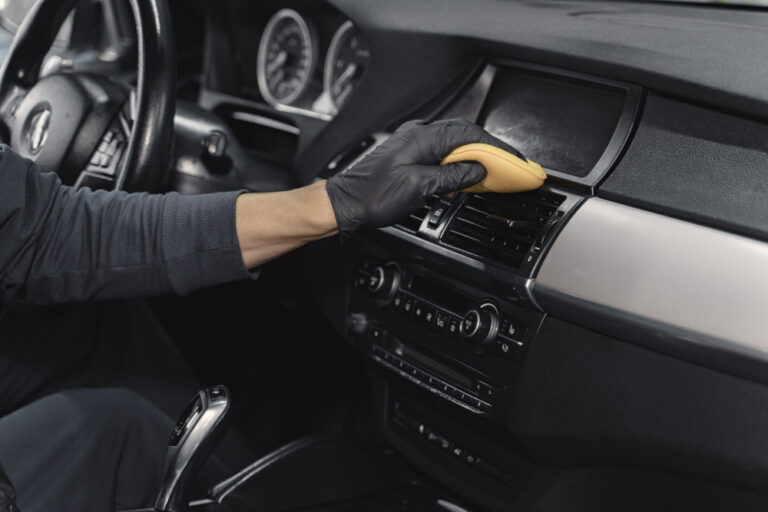
Alongside vacuuming, dust your dashboard, steering wheel, and console with a soft microfiber cloth. A microfiber cloth is essential—it traps dust particles rather than pushing them around, and it won’t scratch sensitive surfaces. For hard-to-reach areas like air vents and crevices in the dashboard, use a soft-bristled brush or an old toothbrush. This prevents dust from accumulating and keeps your interior looking sharp and well-maintained.
Master the Art of Spill and Stain Management
Spills happen. Whether it’s a splash of coffee, a leaked juice box, or an accidental condiment mishap, the key is to act immediately. A spill that sits for even a few hours becomes exponentially harder to remove. The longer a liquid sits, the more it seeps into your upholstery fibers and sets into permanent stains.
Keep a microfiber towel and a bottle of all-purpose upholstery cleaner in your car at all times. When a spill occurs, blot it immediately with the towel—don’t rub, as rubbing can push the liquid deeper into the fabric. Use your upholstery cleaner according to product instructions, and blot again until the stain is removed. For stubborn stains, let the cleaner sit for a few minutes before blotting.
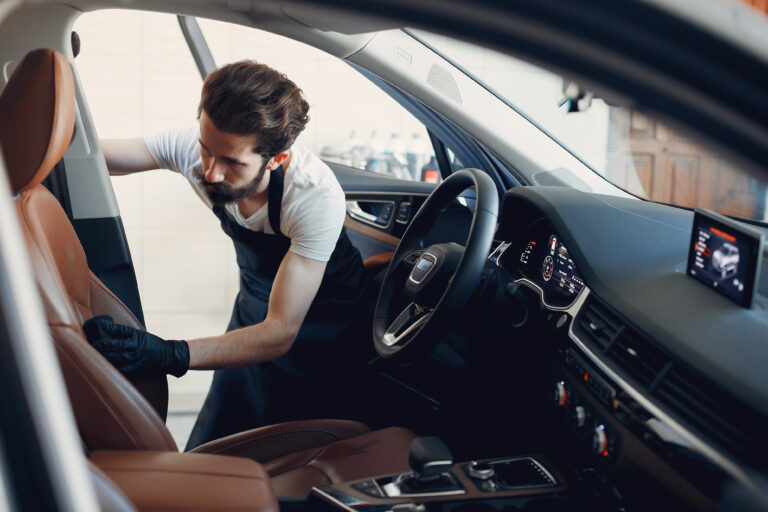
For your cup holders, which are notorious for becoming sticky messes, line them with silicone cup liners or washable inserts. These catch any spillage or condensation from cold drinks, making cleanup effortless. Simply remove the liner, empty it, and rinse it clean. Alternatively, you can use an old sock sprayed with all-purpose cleaner to wipe around the inside of cup holders for a quick refresh. Remove empty cups and bottles promptly to prevent condensation buildup and sticky residue.
Protect and Maintain Your Car Seats
Your seats are one of the most visible and frequently used parts of your car’s interior. Whether they’re made of fabric, leather, or synthetic materials, they deserve dedicated care. For fabric seats, use a quality fabric protector spray or treatment once or twice a year. These create an invisible barrier that repels liquids and prevents stains from setting in, giving you extra time to clean up spills before they become permanent.
Leather seats require more specialized care. Clean them monthly with a leather-specific cleaner that gently removes dirt and oils without damaging the material. Follow up with a quality leather conditioner every two to three months. Think of conditioning as giving your leather a nourishing meal—it keeps the material soft, supple, and prevents cracks and fading that come from drying out. A well-conditioned leather seat will look elegant and feel luxurious, just like it did when you first drove off the lot.
For microfiber or suede-like seats, use only products specifically designed for these materials. Avoid using regular upholstery cleaners, as they can damage the delicate fibers. Always test any new cleaner on a hidden area first to ensure it won’t cause discoloration or damage. If you notice stubborn stains on any seat type that you can’t remove yourself, that’s when professional car detailing services become invaluable.
Care for Different Interior Materials Properly
Your car’s interior is a mix of different materials, and each requires its own approach. Beyond seats, you’ll encounter plastic trim, vinyl, rubber, carpets, and possibly wood accents. Understanding how to care for each material prevents accidental damage and keeps everything looking fresh.
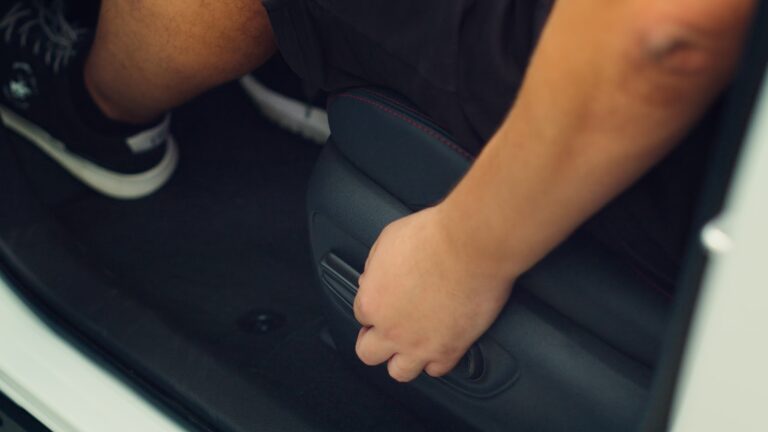
For plastic and vinyl surfaces, use a mild cleaning solution with a soft cloth. Avoid abrasive scrubbers that can scratch or dull the finish. A UV-resistant dashboard protectant is invaluable for preventing sun damage, cracks, and fading of your dashboard and trim pieces. Apply it every few months, especially if you park in direct sunlight regularly. This not only maintains aesthetics but also prevents the plastic from becoming brittle over time.
Rubber floor mats and trim benefit from regular cleaning and occasional conditioning. Clean them with warm, soapy water and a soft brush, then dry thoroughly. For rubber floor mats, shake them out frequently to remove loose dirt and debris. If your car has carpeted floors, vacuum them thoroughly and consider using a carpet stain protector similar to what you’d use on seats.
Never use harsh chemicals like bleach or acetone on any interior surfaces. These can damage paint, fade colours, and weaken materials. When in doubt, test any new product on a small, inconspicuous area first. Your car’s interior is too important to risk with untested products.
Keep Your Dashboard and Console Fresh
Your dashboard and console are like the command center of your car—they deserve attention and care. Dust accumulates on these surfaces quickly, especially if you keep your windows cracked or partially open while driving. A weekly wipe-down with a microfiber cloth keeps dust at bay and maintains that fresh, clean look.
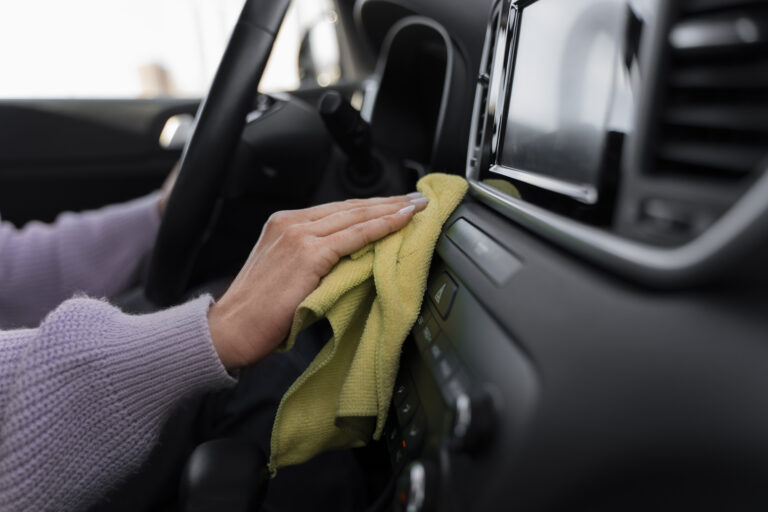
For the dashboard, using a UV-resistant dashboard protectant serves dual purposes. It cleans and shines the surface while protecting it from harmful UV rays that can cause cracking, fading, and deterioration. Apply it every few months for best results. For the center console, which often becomes a repository for small items, receipts, and loose change, establish a regular clearing routine. Empty it weekly, wipe down surfaces with a microfiber cloth, and organize items neatly.
Don’t neglect your steering wheel. It collects oils, dust, and dirt from your hands every single day. Clean it monthly with a mild cleaner appropriate for its material—leather, suede, rubber, or synthetic—to keep it looking and feeling fresh. A clean steering wheel isn’t just aesthetically pleasing; it also prevents dirt from transferring back to your hands during long drives.
Eliminate Odours at the Source
A car that smells fresh is a joy to drive in, but odours can develop quickly if you don’t address them properly. Rather than just masking smells with air fresheners, it’s better to eliminate the source. Bad odours typically come from trapped moisture, mold in your AC system, food residues, or pet-related accidents.
Start by identifying where the smell is coming from. Is it musty? That suggests moisture or mold, often in the air conditioning system or carpets. Is it coming from the seats or carpets? There may be an old spill or accident you missed. Does it smell like food? You likely have decomposing food particles somewhere. Once you’ve identified the source, you can address it directly.

For air conditioning odours, regular use of your car’s AC actually helps by keeping moisture at bay. Don’t let your AC system sit idle. Additionally, consider using an AC evaporator cleaner to eliminate the buildup of bacteria, mold, and mildew that cause musty smells. For stubborn carpet odours, sprinkle baking soda on affected areas, let it sit overnight, then vacuum thoroughly. This natural deodorizer absorbs odours without adding chemicals.
After addressing the root cause, use air fresheners to maintain a pleasant aroma. Choose high-quality options from reputable brands—whether it’s hanging fresheners, clip-on varieties, or spray options. Change or refresh your air fresheners every four to six weeks for a consistent fragrance. The key is using fresheners as a supplement to cleanliness, not as a replacement for proper maintenance.
Organize Your Space to Prevent Clutter
A cluttered interior is a dirty interior. When items are scattered around, dust settles on them, dirt gets trapped beneath them, and odours develop. Organization is preventive maintenance for your car’s interior. Start with designated storage for essentials you keep in your car regularly—documents, emergency supplies, first aid kits, and tools.
Invest in storage solutions that fit your car’s layout. Backseat organizers, door pocket organizers, under-seat storage boxes, and trunk organizers all play a role in keeping your car tidy. Label storage areas so family members know where things belong. An organized family is a family that maintains a clean car.

Keep an emergency kit in your car with essentials like tissues, wet wipes, band-aids, basic medications, and ORS solutions. Store these in an organized box or kit, not scattered across various compartments. If anyone gets motion sickness or has accidents during drives, having supplies organized and readily accessible means less mess and easier cleanup.
Remove items from your car that don’t belong there. That pile of old receipts, forgotten deliveries, or items you “meant to bring inside” should be removed weekly. Look under seats where items naturally migrate and gather. A clear, organized interior not only looks better and smells fresher but also makes regular maintenance and cleaning much easier.
Address Windows and Glass for Clarity
Clean windows and glass are often overlooked in interior maintenance discussions, but they’re crucial for both aesthetics and safety. Your windshield, side windows, and rear window should be cleaned regularly to remove dust, fingerprints, moisture, and buildup that clouds visibility.
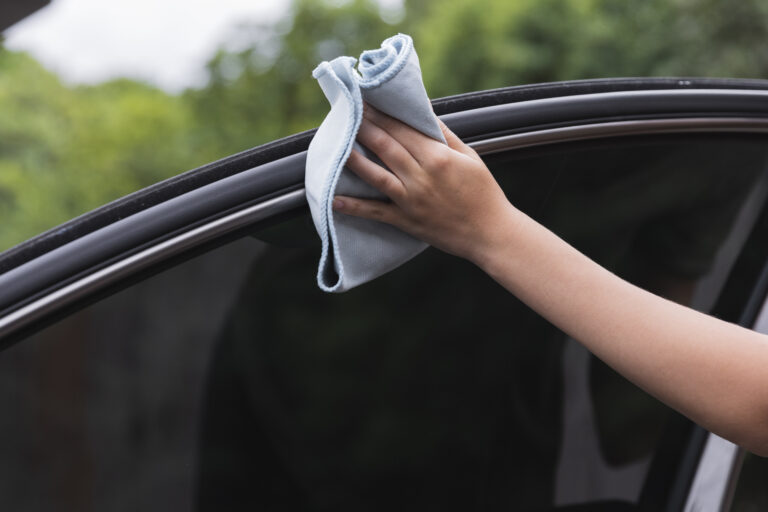
Use a quality glass cleaner and microfiber cloths to clean all windows from the inside. For the windshield, clean it from both sides at least once a week if you drive daily. Pay special attention to the interior side of the windshield, which accumulates a film of dust and residue over time. This film not only looks dingy but can also affect your visibility, especially at night or in poor weather conditions.
Don’t forget the smaller glass surfaces like mirror interiors and instrument cluster covers. These also accumulate dust and fingerprints. A quick wipe with a microfiber cloth keeps them crystal clear. Clean glass interior surfaces enhance the overall freshness of your car and give the impression of a well-maintained vehicle.
Know When to Seek Professional Interior Cleaning
While regular maintenance and spot cleaning keep your car’s interior in good shape, sometimes you need the expertise and equipment that only professional car interior cleaning services can provide. Intensive interior cleaning is different from regular maintenance—it’s a deep, thorough restoration that addresses areas you can’t easily reach yourself.
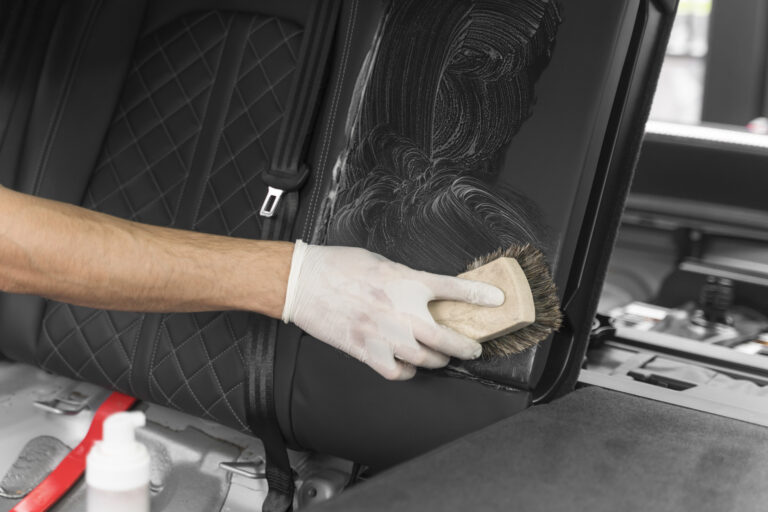
Professional car detailing services like those offered at CarzSpa use specialized equipment, professional-grade cleaning solutions, and expert techniques to deep clean your car’s interior. This includes steam cleaning carpets and seats to remove embedded dirt, sanitizing and deodorizing your entire cabin, treating leather with specialized products, and restoring surfaces to like-new condition. Professional detailers can also safely remove stubborn stains that household methods can’t handle.
We recommend professional interior cleaning at least once or twice a year, depending on your usage and driving conditions. If you have pets, children, or drive in harsh environments, more frequent professional cleaning is beneficial. Think of it like getting a professional massage after months of self-care—it’s restorative and deeply rejuvenating for your car’s interior. Professional cleaning also extends the life of your upholstery, maintains your car’s resale value, and creates a healthier environment inside your vehicle.
To Conclude…
Your car’s interior is where comfort meets functionality, and maintaining it should be a priority just like maintaining its exterior. By establishing preventive habits, vacuuming regularly, managing spills immediately, protecting your seats, organizing your space, and addressing odours at their source, you can keep your car’s interior fresh, clean, and inviting.
These practices, combined with professional intensive interior cleaning, ensure that your car remains a pleasant, hygienic, and valuable asset. Remember, a well-maintained interior isn’t just about appearance—it’s about creating a space where you and your passengers feel comfortable, safe, and healthy.
If maintaining your car’s interior feels overwhelming or if you need expert help restoring it to its best condition, CarzSpa Detailing Studios is here for you. Our professional car detailing and intensive interior cleaning services can transform your car’s cabin, removing years of accumulated dirt, odours, and stains. Contact us today and experience the difference professional care can make. Let us help you preserve your car’s beauty from the inside out.
Frequently Asked Questions
1. How often should I clean my car’s interior?
For regular maintenance, vacuum and dust your interior at least once a week if you drive daily. Wipe down surfaces and address any spills immediately. For a deeper professional clean, aim for at least once or twice a year, depending on your usage and driving conditions.
2. What’s the best way to remove tough stains from car seats?
For tough stains, first identify the material of your seat. For fabric, use a fabric-specific upholstery cleaner, apply it to the stain, let it sit for a few minutes, then blot gently. For leather, use a leather cleaner and condition afterwards. If DIY methods don’t work, professional car detailing services have industrial-strength solutions and equipment to handle stubborn stains safely.
3. How can I eliminate bad smells from my car?
Identify the source first—check for moisture issues, mold in the AC system, trapped food particles, or pet accidents. Address the root cause directly: use AC evaporator cleaner, sprinkle baking soda on carpets, or remove trapped debris. After addressing the source, use quality air fresheners and keep your car well-ventilated. For persistent odours, professional deodorizing services can help.
4. Should I use leather conditioner on my car’s leather seats?
Yes, absolutely. Leather conditioner is essential for maintaining leather seats. It keeps the material soft, supple and prevents cracking from UV exposure and drying. Apply a quality leather conditioner every two to three months for best results. This extends the life of your seats and maintains their luxurious appearance.
5. What’s the difference between regular vacuuming and professional interior cleaning?
Regular vacuuming maintains surface cleanliness and removes loose dirt. Professional interior cleaning is intensive and deep—it includes steam cleaning to remove embedded dirt from carpets and seats, sanitizing and deodorizing the entire cabin, treating different materials with specialized products, and restoring surfaces to like-new condition. Professional cleaning reaches areas you can’t access with regular maintenance and provides results that last longer.

